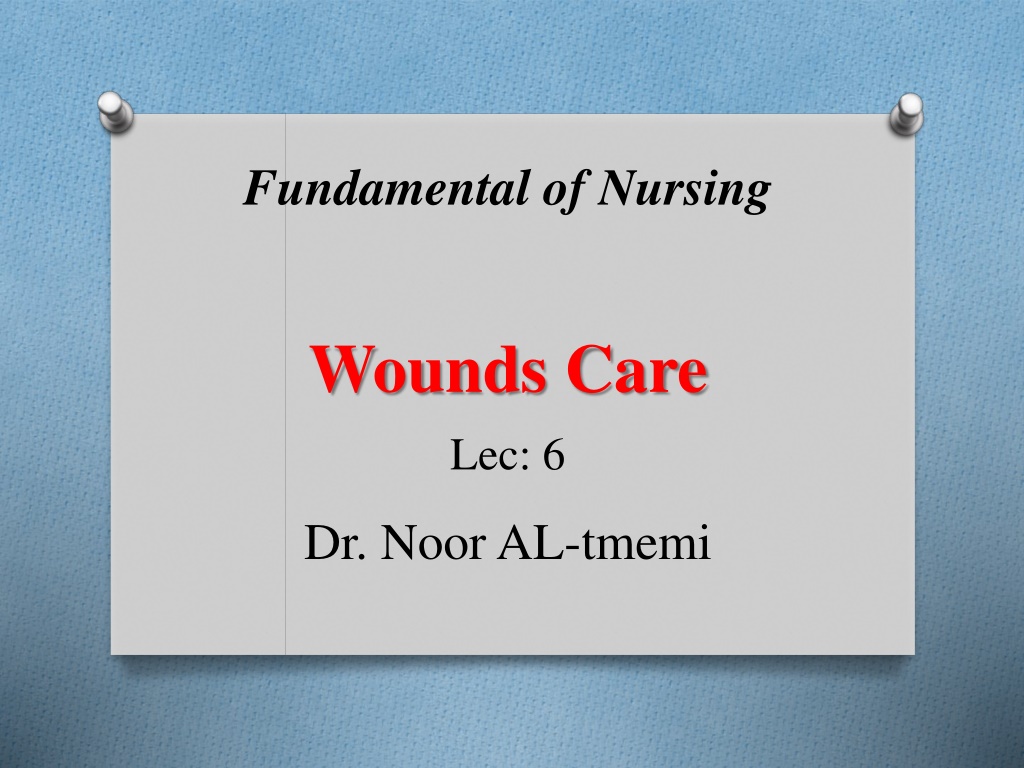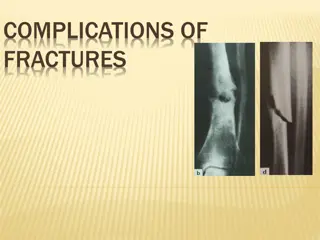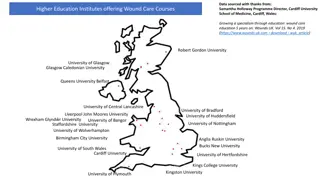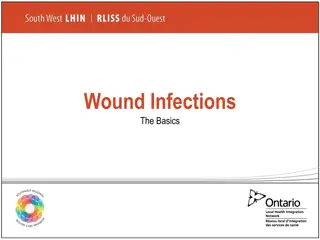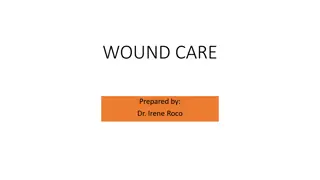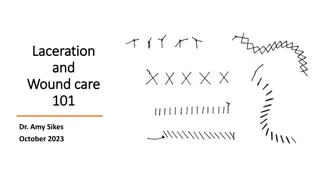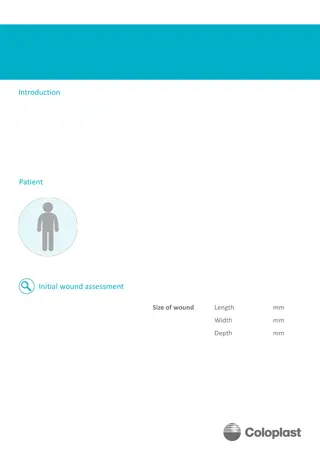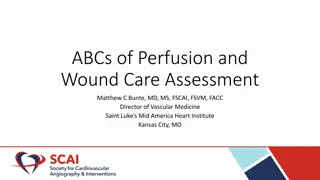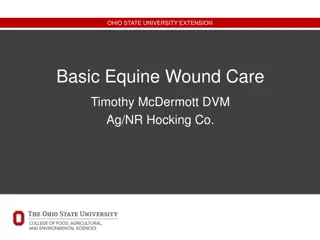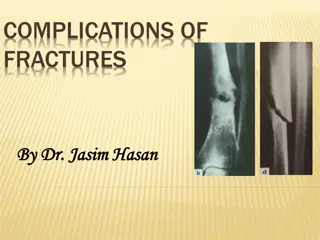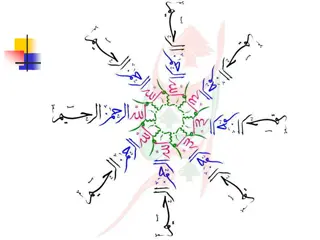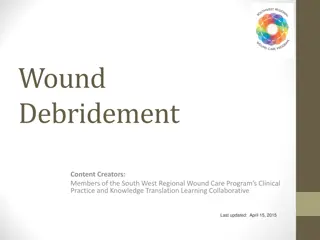Understanding Wound Care: Types, Healing Process, and Complications
Wound care involves managing various types of wounds such as bruises, abrasions, lacerations, and more. Understanding wound healing processes like primary and secondary intention is crucial. Factors like age, nutrition, and smoking can affect healing. Monitoring signs of healing and recognizing complications like infection, hemorrhage, and pain are essential for effective wound management.
Download Presentation

Please find below an Image/Link to download the presentation.
The content on the website is provided AS IS for your information and personal use only. It may not be sold, licensed, or shared on other websites without obtaining consent from the author. Download presentation by click this link. If you encounter any issues during the download, it is possible that the publisher has removed the file from their server.
E N D
Presentation Transcript
Fundamental of Nursing Wounds Care Lec: 6 Dr. Noor AL-tmemi
Wounds Care Wound: is a disruption in the normal integrity of the skin. Causes of wounds: 1- Intentional. 2- Unintentional.
Types of wound 1. Bruise wound or (contusion). 2. Abrasion wound or (scrape or rug burn). 3. Laceration wound (Cut, or incision). 4. Avulsion wound. 5. Puncture wound.
Kinds of Wound Drainage Exudate: Material such as fluid and cells that have escaped from blood vessels during inflammatory process. Types of exudate 1. Serous Exudate 2. Purulent Exudate 3. Sanguineous (hemorrhagic) Exudate 4. Mixed Sanguineous (hemorrhagic) Exudate a-Serosanguineous Exudate b- Purosanguineous Exudate
Types of Wound Healing: The types of healing are influenced by the amount of tissue loss. 1. Primary intention healing occurs where the 2. Secondary intention healing: 3. Tertiary intention healing
Signs of healing incisions the nurse expect to observe: 1. Absence of bleeding and appear of a clot binding the wound edges. 2. Inflammation (redness and swelling) at the wound edges for 1 to 3 days. 3. Reduction in inflammation when the clot diminishes, as granulation tissue starts to bridge the area.
4. Scar formation Collagen synthesis starts 4 days after injury and continues for 6 months or longer. 5. Diminished scar size over a period of months or years.
Factors affecting wound healing: 1.Age 2.Nutrition 3.Oxygenation 4.Smoking 5.Drug therapy 6.Diabetes mellitus
Wound complications 1. Infection 2. Hemorrhage 3. Pain 4. Anxiety 5. Alteration in body image (deformity). 6. Dehiscence.
Assessing the wound: 1. Appearance: 2. wound drainage: - Serous. - Purulent 3. Pain: 4. Related assessment:
Caring of Wounds 1.Provide physical, psychological and anesthetic comfort. 2. Remove necrotic tissues. 3. Prevent and control infection. 4. Absorb drainage.
5. Keep the wound moist and therefore enhance epithelialization. 6. Clean the wound or keep it clean. 7. Protect the wound from physical trauma or bacterial invasion.
